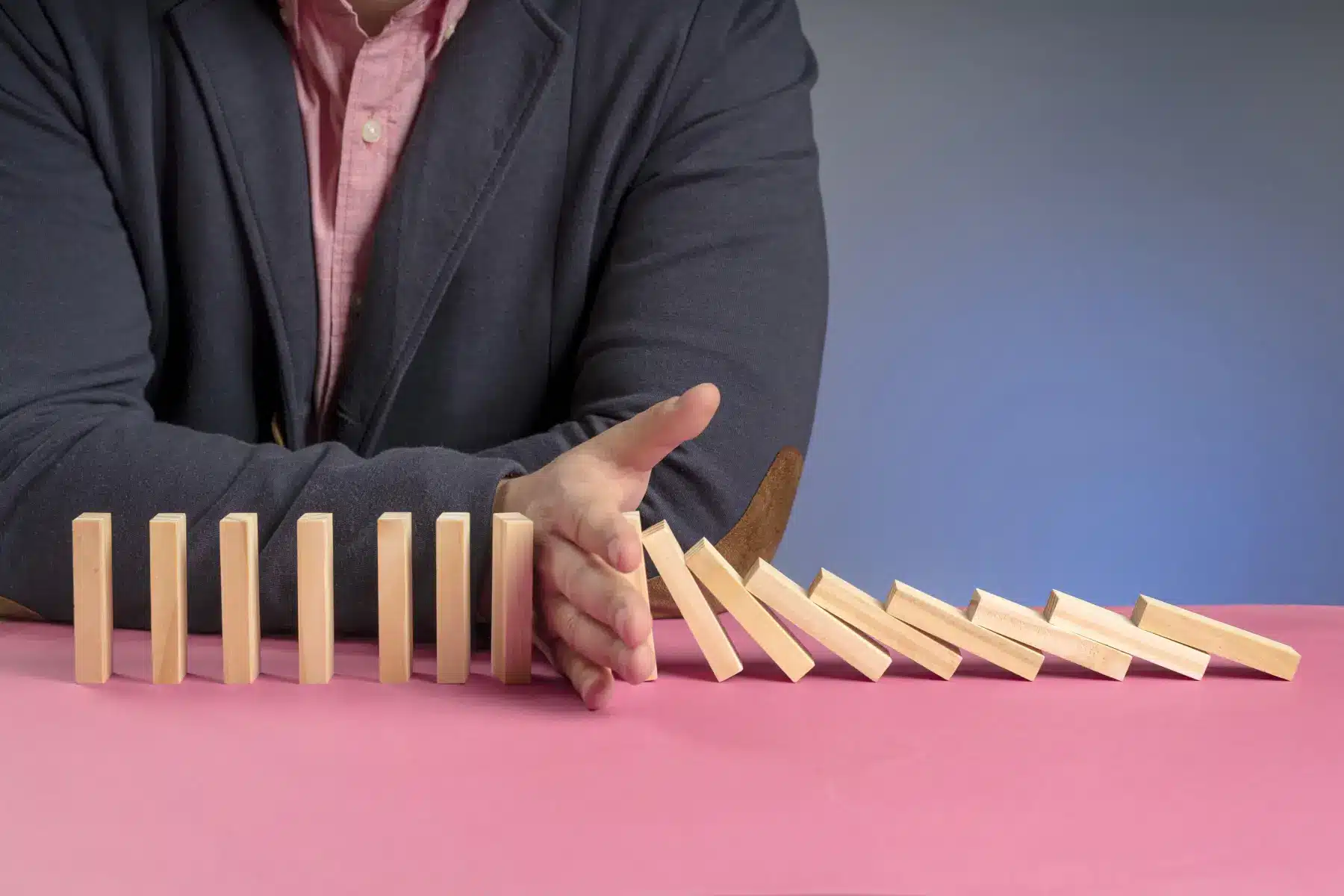For many of us, times have never been more challenging. Whether we’re dealing with unexpected hardship, grief, fear of change, financial or emotional stress, COVID-19 is certainly taking its toll.
So how can you improve your resilience during difficult times? Is it just a case gritting your teeth and getting on with things?
Thankfully not.
Improving your resilience is about learning how to become more efficient with your internal resources; it’s about recognizing when you’re wasting time and energy on thoughts and feelings that aren’t serving you, and learning how to manage that in a more proactive way.
But more than anything it’s about embracing difficult experiences, learning from them in a way that’s going to make you bigger, better, and stronger in the future.
Why negative thinking isn’t always a bad thing
Okay, let’s take a minute to think about how the brain works. Of course, it’s a hugely complex organ so let’s imagine for now that there are effectively two parts to the brain, system one and system two.
When it comes to negative thinking, system one is firmly in charge. This is the oldest part of the brain, it’s the part that deals with bodily functions, and — importantly — it’s the part that’s tasked with keeping us safe. It’s hard-wired to be constantly monitoring situations, gauging both our level of physical safety and where we sit in relation to others. And to do that, it needs to be adept at finding the negatives in any situation — it’s how our ancestors survived. They had to be constantly on the lookout for threats to their survival. Sure, it’s a lovely day, but hey, is that a sabre-tooth tiger hiding behind those bushes?
Negative thinking is how we survive, it’s how we anticipate danger and take the necessary precautions to keep ourselves safe
However, while negative thought patterns can help protect us, being too tuned into them can lead to an unhappy or unsettled life. It causes us to use our inner resources inefficiently and creates a barrier to resilience. Just think about all the time you’ve wasted worrying about things that didn’t come to pass. Or the times that bad things have actually happened but your stress levels were already so high that your energy resources were completely depleted and so you struggled to cope and adapt.
But if negative thinking patterns are instinctive, if our brains are actually hard-wired to work in such a way, is it possible to make a conscious shift towards resilience? Well, yes, but it will take some effort.
Switching negative thinking: start with self-awareness
It’s estimated that it takes between three and five positive thoughts to counteract a single negative thought. Add to that the fact that some of us have had difficult upbringings or difficult life experiences, changing our brain’s default position will take a concerted effort — and it all begins with self-awareness.
Recognising negative thinking.
If you don’t know that you’re thinking negatively, then it’s very difficult to know how to introduce any kind of alternative strategies. So it’s worth identifying the more common examples of negative thinking so you can recognise them when they come up for you or the people around you.
Fortune telling
Something happens and your brain immediately rushes ahead, starting to imagine a billion worst case scenarios — sound familiar? I call it fortune telling; it’s the kind of thing that often happens when we wake in the night and I imagine it’s something we’re all doing a lot of right now when there’s such a large degree of uncertainty about the future.
That ancient part of your brain — system one — is terrible at dealing with uncertainty which is why it starts running through every possible outcome. But if you recognise when you’re fortune telling, you can pull away from those unhelpful thoughts and bring yourself back to the here and now, reducing system one’s ability to activate stress responses in your body.
Learning to interrupt the pattern
Remember that thoughts do not exist in isolation; every thought that you have will have a chain reaction of events within the body and in terms of your emotions. And so it’s really important to start to recognise these things as early in the process as possible so you can start to take more control.
In fact, even when lots of external things are happening that are outside of our control, being able to take note of what’s happening internally is a great way of starting to feel more in command of things.
So when we recognise that and we start to do something different, we’re creating what’s called a pattern interrupt; we’re interrupting system one’s natural expectations about what it is that we think, what it is that we do, and what it is that we feel.
And when we do that, we allow the other part of the brain — system two — to come into play.
How your brain works: system two
If system one is the ancient brain, working largely on instinct, system two is the more evolved part of your brain where rational thinking rules the day.
It controls your ability to prioritise thoughts and activities; it’s the part of you that’s able to articulate ideas and to collaborate. So we find that the more activated we become within system one, the more instinctively selfish we become and the less aware we become of what’s happening for other people.
Creating a brain balance
When it comes to building resilience and breaking negativity, it’s all about creating a balance between the two systems of the brain.
So if, for example, you’re great at being there for other people but need to work in more time to look after yourself, system one is the place to be. And again, the first step to activating the right brain system is self-awareness that leads to a pattern interrupt — doing something different and subverting the usual expectations.
Or perhaps you’re someone who tends to see things in all-or-nothing terms, black and white thinking. Everything is always either completely awful, or really great. Again, for system one, that’s a useful kind of thought process because it means that we can judge situations quickly, but in reality, when we think about things logically, most things sit somewhere in between; they’re neither one thing nor the other. You can counteract this by slowing things down and actively looking for evidence that contradicts your initial reaction to things.
Putting it into practice
So how do you put all of this into practice and kickstart the process of building the resilience you need to see you through these tough times? Try this exercise:
Think about two or three people that have a really great attitude or approach to life. It could be a friend, family member, or colleague, or even someone in the public eye or a historical figure. Start imagining what this person would do in certain everyday situations: what would they say, what would they do, how would they react?
The idea is that if you start to practice this in everyday situations, it will be easier to bring it into play in more stressful situations when system one tries to take charge. So, for instance, if you find yourself being panicked, the first thing to do is to channel that self-awareness.
Notice what is happening, notice things like fortune telling or all-or-nothing thinking and ask yourself: what would each of those people do in this situation? Or what would they advise you to do?
The very action of pausing and reflecting is a system two activity, it’s a short, sharp shock for system one. It’s a pattern interrupt that takes you away doing what system one would automatically want you to do, which is to immediately act on your initial thought.
Of course, slowing down and considering other options doesn’t mean that you have to reject your first thought, but it does mean that if you then act on that, you are doing so from a more informed position and that the accompanying bodily processes are more likely to be efficient, leaving you spare resources available for other things.
It can feel that some people are just naturally more resilient than others — and recent events may have brought that into sharp relief. But rest assured that absolutely anyone can find that brain balance that’ll give you more control over your reactions to stressful situations. So keep practising!
If you have any comments or questions, get in touch and stay tuned for more resilience-building tips.




















